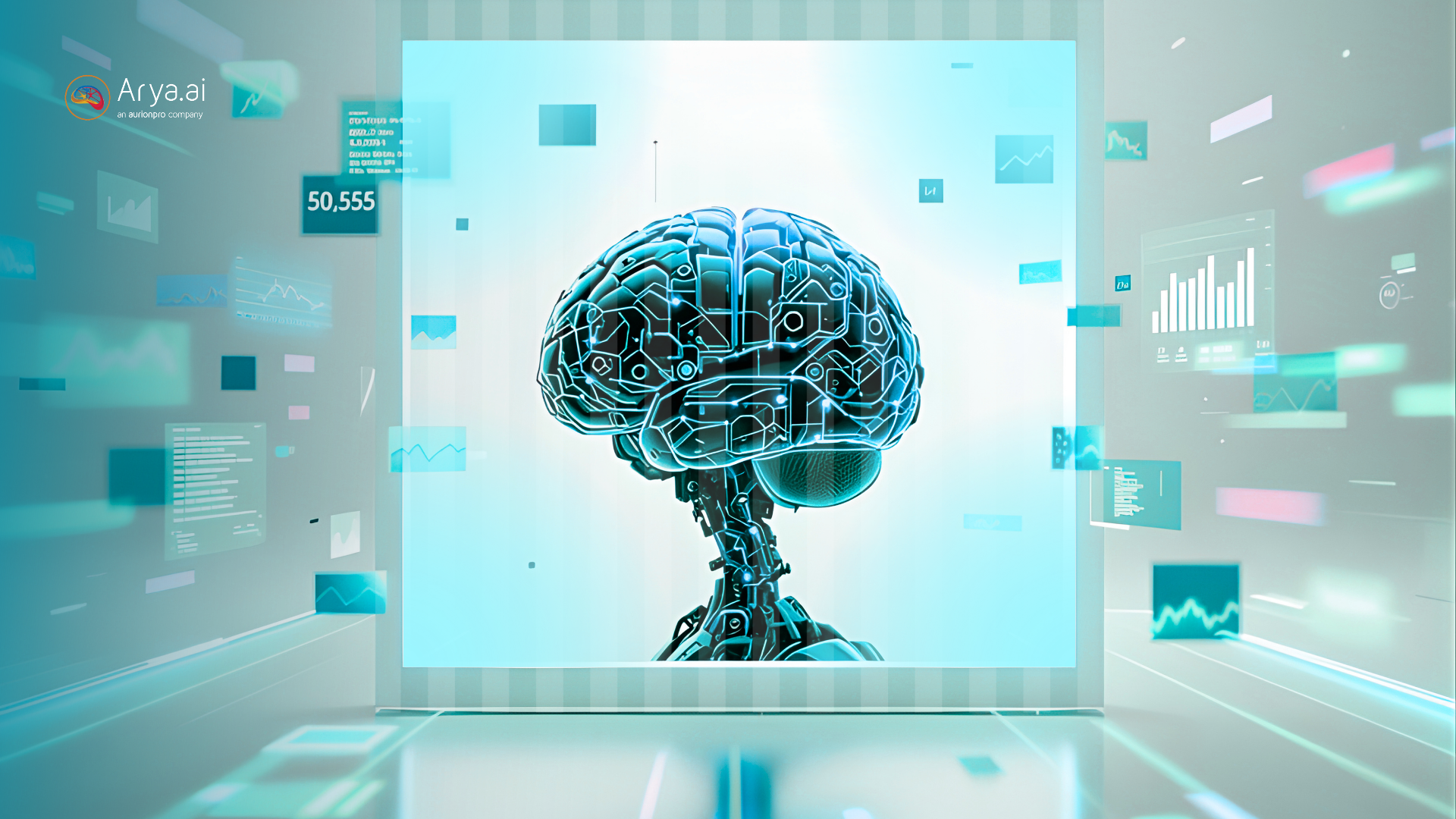
AI agents are no longer experimental. According to a recent BCG survey, over 75% of finance leaders expect AI agents to become a core part of their operations within three years, and lending is leading the charge.
From income verification to KYC and bank statement analysis, traditional rule-based systems are buckling under the pressure of modern lending workflows. They fail to handle the document variability, fraud complexity, and scale needed today.
This blog explores how AI agents intelligent, adaptive systems that read, reason, and collaborate like human underwriters are transforming document intelligence. We’ll break down how they work, where they add value, and why a Human+AI model is the future of lending operations.
Why Rule-Based Parsing is now Obsolete in Lending Workflows?
Rule-based document parsers, once the backbone of lending automation, are rapidly becoming obsolete. These systems follow rigid templates, like assuming an address always sits two inches from the top or that income figures appear beside the label "Net Pay."
But in the real world of lending, documents vary wildly: a scanned pay stub from a gig worker, a handwritten note from a rural borrower, or a bank statement in a new format. Even a slight change in layout can break these parsers, leading to errors, missed data, or total failure.
Maintaining hundreds of templates to cover all possible formats is not only unsustainable but also cost-intensive. Worse, these systems can’t generalize, adapt to messy inputs, or handle unstructured data like tax returns or ID scans making them ill-suited for today’s lending workflows.
The cracks deepen under real-world conditions. Rule-based systems are fragile in the face of noise OCR errors, smudges, or poor scans can cause them to misfire. They’re blind to novel fraud patterns, easily outsmarted by slight manipulations that fall outside their rule sets. And when these systems fail, humans must step in—creating bottlenecks and defeating the purpose of automation. For lenders under pressure to move fast, serve a wide spectrum of customers, and mitigate risk, the rule-based approach is too slow, too brittle, and too costly. The industry is ready for something far more intelligent.
Enter AI Agents: A New Era of Intelligent Document Intelligence
The move from rule-based document parsers to AI agents in finance presents a paradigm shift. Unlike static templates, AI agents act like digital underwriters, capable of interpreting documents, extracting and cross-checking data, and reasoning through inconsistencies entirely on their own. They plan agentic workflows, invoke tools like OCR or translation when needed, and adapt in real time, making them far more flexible and efficient than traditional systems.
.jpg)
Crucially, AI agents learn from varied document formats and unstructured inputs, continuously improving without manual rule updates. Many solutions now deploy networks of specialized agents handling classification, extraction, validation, and fraud checks coordinated by multiple AI platforms. For lenders, this means a single intelligent pipeline that evolves with every application.
What Does “AI Agents for Document Intelligence” Actually Mean?
In the context of lending, AI agents function as autonomous digital analysts that replicate the core tasks traditionally performed by a human document processor. Rather than simply extracting information, these agents orchestrate the entire flow from interpreting diverse document formats to validating data and surfacing actionable insights.
.jpg)
At a high level, these AI agents follow a perception → reasoning → action cycle, much like a human underwriter. They begin by “reading” documents using advanced computer vision and OCR, apply context-aware reasoning through machine learning models, and then take appropriate steps whether that means flagging an inconsistency, calling a third-party API, or generating a final output.
Let’s break down what these agents actually do:
- Document Classification: AI agents first identify the type of document being processed such as a pay slip, ID proof, or bank statement and route it through the appropriate processing pipeline. They use layout recognition, semantic cues, and even visual markers to do this accurately, which is essential for avoiding misclassifications that could lead to downstream errors.
- Data Extraction: Next, the agent extracts relevant fields like names, dates, account numbers, or income details. Unlike traditional template-based systems, AI-based extraction can handle a variety of formats including scanned images, handwritten text, or noisy documents by learning from large datasets. This leads to higher accuracy and less reliance on predefined layouts.
- Cross-Validation & Logical Reasoning: Rather than accepting document data at face value, the agent validates it against other inputs. For example, it might check if the applicant's name is consistent across all submitted documents or if the salary on a pay stub matches deposits in a bank statement. It can also query external sources like payroll APIs or KYC databases to verify the information. This reasoning capability helps catch errors and potential fraud.
- Anomaly & Fraud Detection: AI agents are also trained to detect signs of tampering, duplication, or unusual patterns. This includes identifying forged documents by analyzing visual cues (like mismatched fonts or duplicate transactions), inconsistencies in metadata, or irregular document structures. These insights go far beyond what rule-based systems can detect.
- Summarization & Decision Support: Finally, all validated information is compiled into a structured, machine-readable format ready to feed into a loan decisioning system or a credit officer dashboard. This can include a detailed credit summary, flags for manual review, and confidence scores for each extracted field. In some cases, the agent can also trigger approval or rejection decisions based on predefined lending criteria.
In essence, an AI document agent acts like a digital co-worker who reads, understands, verifies, and takes decisions on loan documents intelligently and autonomously. It’s not just automation; it’s intelligent orchestration of complex document workflows, powered by perception, logic, and action.
The Technology Behind: Modular Multi‑Agent Architecture
Behind the scenes, AI-powered document intelligence systems are built as modular multi-agent frameworks a network of specialized AI agents working in sync to automate the entire document lifecycle. Rather than one bulky model handling everything, each agent is trained for a distinct task: one for classification, another for extraction, another for validation or fraud checks, and so on. These agents collaborate like a digital assembly line, orchestrated by a central controller that manages sequencing and dependencies.
.jpg)
This architecture delivers three major advantages:
- Scalability: Agents can run in parallel, enabling high-volume document processing with elastic infrastructure. If there’s a spike in loan applications, more extraction or validation agents can be spun up instantly.
- Specialization: Each agent is fine-tuned for its function whether it’s OCR, NLP, or fraud detection ensuring higher accuracy and reliability than general-purpose models.
- Flexibility: New agents can be added or reused across workflows. For example, a KYC ID reader can also serve lending or insurance teams without changes.
To build and manage these systems, a growing ecosystem of tools has emerged:
- LangChain and LangGraph help define agent workflows and state transitions, ideal for chaining LLM-powered agents.
- Arya AI Apex offers pre-built modules for OCR, classification, extraction, and review, streamlining end-to-end deployment for document-heavy industries.
- AgentOps frameworks provide enterprise-grade controls monitoring, auditing, performance logging, and policy enforcement vital for BFSI compliance.
Together, these technologies enable lenders to assemble agile, auditable, and scalable AI pipelines powered not by a single model, but by a coordinated team of intelligent agents, each playing its part in document understanding and decision-making.
Will AI Agents Replace Loan Officers or Underwriters?
While the term “AI agent” may evoke images of fully autonomous decision-making, in lending, these agents act more like smart copilots rather than replacements. They take over the repetitive, high-volume, and error-prone parts of the underwriting journey freeing up human experts to focus on judgment, exception handling, and risk-based decisioning.
Let’s break it down through a typical underwriter’s journey and where AI document agents step in:
.jpg)
Step 1: Document Collection & Intake
Traditional: Underwriters receive a scattered mix of documents email attachments, uploads, scanned copies. Sorting and verifying completeness eats up valuable hours.
AI Agent Support: Intake agents automatically collect, sort, and check for missing or illegible files in real time. They provide instant feedback to borrowers, ensuring underwriters start with a clean, structured set of documents.
Step 2: Document Classification
Traditional: Manually labeling and organizing files (bank statements, IDs, tax forms, etc.) is tedious and prone to misclassification.
AI Agent Support: Classification agents accurately identify document types even if mislabeled or uploaded in the wrong order and route them to the right processing logic.
Step 3: Data Extraction & Structuring
Traditional: Underwriters manually extract key data points (income, liabilities, employment history) and enter them into systems. This is time-consuming and error-prone.
AI Agent Support: Extraction agents use OCR and NLP to digitize documents, pull out structured fields, and auto-fill systems like the Loan Origination System (LOS). This reduces turnaround time from hours to minutes.
Step 4: Cross-Validation & Reasoning
Traditional: Underwriters cross-check multiple documents to verify consistency (e.g., income on paystubs vs. bank deposits). This is meticulous work that slows down decisions.
AI Agent Support: Validation agents compare values across documents and flag discrepancies (e.g., mismatched addresses or duplicate statements). They also connect with external APIs (e.g., credit bureaus, payroll services) to automate verifications.
Step 5: Fraud Detection
Traditional: Detecting forged or manipulated documents relies heavily on human intuition and often misses subtle tampering.
AI Agent Support: Fraud detection agents analyze metadata, formatting inconsistencies, and behavioral anomalies to flag potential fraud. They act as an early warning system that complements human review.
Step 6: Decision Prep & Reporting
Traditional: Underwriters create credit memos or summaries for approval committees. This takes hours of synthesis.
AI Agent Support: Summarization agents compile validated data into clean, structured outputs, decision recommendations, and risk flags making it faster and easier for underwriters to make high-quality decisions.
Wrapping it up!
For BFSI leaders, the shift to AI agents isn’t a disruptive overhaul it’s a strategic evolution. Start with high-impact, low-risk areas like automating income verification or KYC document checks. Pilot these workflows, demonstrate measurable ROI, and gradually scale across the lending lifecycle. Maintain transparency, auditability, and human oversight to build trust with internal teams and regulators.
As confidence grows, extend AI agent capabilities into credit underwriting, early warning systems, and even real-time portfolio monitoring where agents analyze news or social signals to flag emerging borrower risks. The future of lending is not Human versus AI, but humans working smarter with AI.





.png)





.png)




.png)
.svg)


